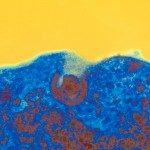Link to Pubmed [PMID] – 12072180
J. Immunol. Methods 2002 Jul;265(1-2):81-96
Apoptosis and primary necrosis are the two modes of cell death induced by a lethal injury. The majority of structural and biochemical events occurring during cell death can be analysed by flow cytometry. The 7-aminoactinomycin D (7-AAD) assay can be used to detect the loss of membrane integrity during apoptosis of murine thymocytes and human peripheral lymphocytes. We describe here new applications of the 7-AAD assay. It can be applied to a variety of cell lines of different origins, including adherent cell lines, and it allows the co-detection of lipidic antigens such as phosphatidylserine (PS) residues, and biochemical processes linked to apoptosis, such as the loss of mitochondrial transmembrane potential, cardiolipin peroxidation, the expression of the 7A6 mitochondrial antigen and DNA fragmentation. Thus, this assay is a noninvasive method particularly adapted to the analysis of biochemical events associated with cell death. Finally, we show that this assay is not specific for apoptosis since it detects oncosis, the early stage of primary necrosis.

